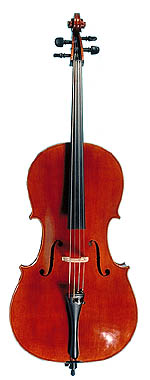
| Opus 36 - Violoncello |
|
|
Usually, the construction of an instrument changes simultaneously with its musical role. The violoncello became a solo instrument in the late seventeenth century, when sonatas and concertos were written for it. In the late eighteenth century, Boccherini, a composer and virtuoso cellist, featured the instrument in his works and concerts. Jean-Benoît Stensland's beautifully crafted violoncello, based on Antonio Stradivari's Piatti model, is finished with a reddish brown varnish on gilded background. Jean-Benoît Stensland Jean-Benoît Stensland has had thorough training as a luthier. He began his apprenticeship in Montreal in 1976 under luthier Jules Saint-Michel and later under Antoine Robichaud. After acquiring the basics of instrument making, he worked at Peate Musical Supplies in Montreal, where he learned how to restore all types of stringed instruments. This training enabled him to obtain a Canada Council grant in 1980 to study for four years at the international school of stringed-instrument making in Cremona, Italy. After graduating in 1984, he earned a certificate of merit for one of his violins in the international instrument-making competition of the Violin Society of America. Back in Canada, Stensland opened a workshop with luthier Thérèse Girard. Together, they have developed techniques based on the Italian and French schools, striving for a particular ideal tone while focusing on the visual aesthetics of the instrument. To date, Jean-Benoît Stensland has made approximately sixty instruments, some of which are played by members of the Montreal Symphony Orchestra, I Musici de Montreal, and the Orchestre métropolitain.
|
 |



